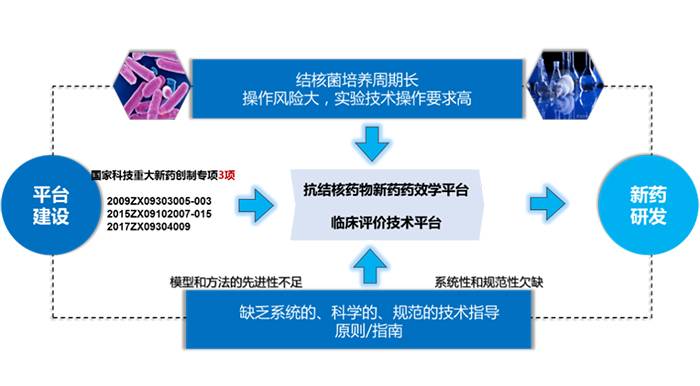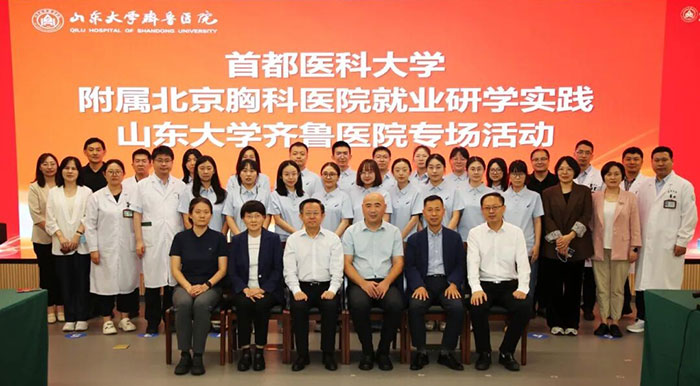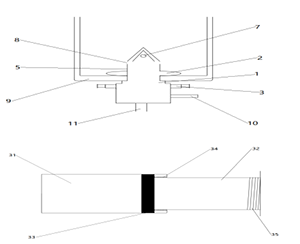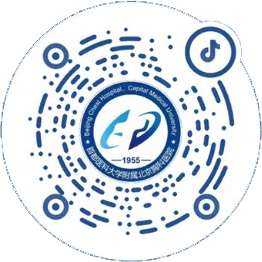2025年
No.1
PubMed
(tuberculosis[Title/Abstract]) OR (lung cancer[Title/Abstract])
Filters applied: from 2025/1/1 - 2025/1/31
1. Lancet Glob Health. 2025 Jan 22: S2214-109X(24)00481-9. doi: 10.1016/S2214-109X(24)00481-9. Online ahead of print.
Tuberculosis and people who use drugs: why focus on this overlooked population is important and why adapted interventions are necessary.
D'Ottavi M(1), Godfrey-Faussett P(2), Merle CS(3), Sofonea MT(4), Laureillard D(5)
People who use drugs show a higher incidence and prevalence of tuberculosis than people who do not use drugs in areas where Mycobacterium tuberculosis is endemic. However, this population is largely neglected in national tuberculosis programmes. Strategies for active case finding, screening, and linkage to care designed for the general population are not adapted to the needs of people who use drugs, who are stigmatised and difficult to reach. Moreover, access to care, linkage to care, and treatment adherence are challenging for such a marginalised population. Learning from the HIV field about successful interventions targeting this group, we advocate for the implementation of tuberculosis interventions adapted for people who use drugs, highlighting the key role that community-based approaches could have in both design and implementation. Alongside reducing health inequities by reducing the excess tuberculosis burden among people who use drugs, these targeted interventions can also reduce tuberculosis transmission at the population level.
PMID: 39862874
2. J Thorac Oncol. 2025 Jan 24: S1556-0864(25)00052-8. doi: 10.1016/j.jtho.2025.01.019. Online ahead of print.
Lung cancer screening program quality indicators - review & recommendations - An International Association for the Study of Lung Cancer Delphi process study.
Tammemägi MC(1), Borondy-Kitts A(2), Field JK(3), Henschke CI(4), Mohan A(5)
INTRODUCTION: Lung cancer screening (LCS) using low-dose-computed tomography reduces lung cancer mortality in high-risk individuals. Evaluating and monitoring LCS programs are important to ensure and improve quality, efficiency and participant outcomes. There is no agreement on LCS quality indicators (QIs).
METHODS: Twenty multidisciplinary members of IASLC used a Delphi process to develop consensus Qis. They considered 50 Qis during information/discussion sessions and two anonymous voting rounds. ≥80% voting agree/strongly agree on a five-point Likert scale determined consensus.
RESULTS: Twenty essential and six desirable QIs were identified in 10 of 11 LCS pathway domain categories: ENTRY: Proportion eligible who got screened. SMOKING_CESSATION: Proportion current-smoking individuals offered cessation interventions. IMAGING: Proportion screened requiring clinical diagnostic assessment, scans results distribution, proportion scans requiring early follow-up, proportion baseline/regular scans with actionable additional findings. ADHERENCE TO: Annual/regular scans, early interim scans, clinical diagnostic assessment. DIAGNOSTIC: Proportion suspicious-for-lung-cancer scans receiving clinical investigation, undergoing invasive diagnostic procedures. OUTCOMES: Cancer detection rate, stage distribution, interval cancer rate HARMS: Number/proportion of serious complications following invasive procedures, non-lung cancer diagnoses following invasive procedures, or following surgery, 30-day mortality following invasive procedure. TREATMENT: Proportion early-stage cancers receiving treatment with curative intent. WAIT_TIMES: Suspicious-for-lung-cancer scan to definitive diagnosis, curative-intent treatment for individuals with early-stage disease, scan completion to reporting results to PCP/participant. EQUITY: Race/sex/socioeconomic differences in adherence to regular screens, early-stage cancer treatment, offer of smoking cessation interventions, clinical investigation of suspicious-for-lung-cancer screens.
DISCUSSION: Review among panel members provide recommended LCS QIs that should be considered in development of LCS initiatives.
PMID: 39864549
3. Nat Rev Immunol. 2025 Jan 7. doi: 10.1038/s41577-024-01124-3. Online ahead of print.
How macrophage heterogeneity affects tuberculosis disease and therapy.
Russell DG(1), Simwela NV(2), Mattila JT(3)(4), Flynn J(4)(5), Mwandumba HC(6)(7)
Macrophages are the primary host cell type for infection by Mycobacterium tuberculosis in vivo. Macrophages are also key immune effector cells that mediate the control of bacterial growth. However, the specific macrophage phenotypes that are required for optimal immune control of M. tuberculosis infection in vivo remain poorly defined. There are two distinct macrophage lineages in the lung, comprising embryonically derived, tissue-resident alveolar macrophages and recruited, blood monocyte-derived interstitial macrophages. Recent studies have shown that these lineages respond divergently to similar immune environments within the tuberculosis granuloma. Here, we discuss how the differing responses of macrophage lineages might affect the control or progression of tuberculosis disease. We suggest that the ability to reprogramme macrophage responses appropriately, through immunological or chemotherapeutic routes, could help to optimize vaccines and drug regimens for tuberculosis.
PMID: 39774813
4. Nat Commun. 2025 Jan 18;16(1):826. doi: 10.1038/s41467-025-56146-9.
The clinical-stage drug BTZ-043 accumulates in murine tuberculosis lesions and efficiently acts against Mycobacterium tuberculosis.
Römpp A(1)(2), Treu A(#)(3)(4), Kokesch-Himmelreich J(#)(3)(4), Marwitz F(#)(5)(6)
The development of granulomas with central necrosis harboring Mycobacterium tuberculosis (Mtb) is the hallmark of human tuberculosis (TB). New anti-TB therapies need to effectively penetrate the cellular and necrotic compartments of these lesions and reach sufficient concentrations to eliminate Mtb. BTZ-043 is a novel antibiotic showing good bactericidal activity in humans in a phase IIa trial. Here, we report on lesional BTZ-043 concentrations severalfold above the minimal-inhibitory-concentration and the substantial local efficacy of BTZ-043 in interleukin-13-overexpressing mice, which mimic human TB pathology of granuloma necrosis. High-resolution MALDI imaging further reveals that BTZ-043 diffuses and accumulates in the cellular compartment, and fully penetrates the necrotic center. This is the first study that visualizes an efficient penetration and accumulation of a clinical-stage TB drug in human-like centrally necrotizing granulomas and that also determines its lesional activity. Our results most likely predict a substantial bactericidal effect of BTZ-043 at these hard-to-reach sites in TB patients.
PMID: 39827265 [Indexed for MEDLINE]
5. JAMA Oncol. 2025 Jan 1;11(1):60-69. doi: 10.1001/jamaoncol.2024.5218.
Targeting CNS Metastases in Non-Small Cell Lung Cancer with Evolving Approaches Using Molecular Markers: A Review.
Malhotra J(1), Mambetsariev I(1), Gilmore G(1), Fricke J(1), Nam A(2), Gallego N(3)
IMPORTANCE: Central nervous system (CNS) metastases presenting as either brain parenchymal metastases or leptomeningeal metastases are diagnosed in up to 50% of patients with advanced non-small cell lung cancer during their disease course. While historically associated with a poor prognosis due to limited treatment options, the availability of an increasing number of targeted therapies with good CNS penetration has significantly improved clinical outcomes for these patients. This has occurred in parallel with a more nuanced understanding of prognostic factors.
OBSERVATIONS: Multiple clinical trials have reported that disease control can be observed with targeted therapies with adequate CNS penetration, particularly for patients with molecular alterations in EGFR, ALK, ROS1, and RET. For these tumors, systemic targeted therapy may be used first for the management of CNS metastases, prior to considering radiation therapy (RT). At the time of isolated progression in the CNS, RT may be considered for the progressing lesions with continuation of the same systemic therapy. For other molecular alterations as well as for patients treated with checkpoint inhibitors, data are not yet clear if systemic therapy is sufficient for untreated CNS metastases, and early RT may need to be integrated into the treatment planning. An increasing number of studies investigate the role that emerging techniques, such as the sequencing of tumor DNA from resected brain metastases tissue or cerebrospinal fluid or radiomics-based analysis of CNS imaging, can play in guiding treatment approaches.
CONCLUSIONS AND RELEVANCE: With multiple generations of targeted therapies now available, the treatment for CNS metastases should be tailored to the patients with consideration given to molecular testing results, CNS penetrance of systemic therapy, patient characteristics, and multidisciplinary review. More research is needed in understanding the clonal evolution of CNS metastases, and the development of novel therapeutics with CNS efficacy.
PMID: 39602134 [Indexed for MEDLINE]
6. J Thorac Oncol. 2025 Jan 30:S1556-0864(25)00057-7. doi: 10.1016/j.jtho.2025.01.024. Online ahead of print.
Barriers to Lung Cancer Screening in a Multi-Disciplinary Thoracic Oncology Program Cohort: Effects of an Incidental Pulmonary Nodule Program.
Liao W(1), Ray MA(2), Patel A(1), Roma J(1), Marshall H(1), Fehnel C(1), Goss J(1)
INTRODUCTION: Lung cancer screening (LCS) reduces mortality, but adoption has been slow; some people who develop lung cancer are ineligible. Incidental pulmonary nodule (IPN) programs also detect lung cancer early. We quantified barriers to LCS and the impact of an IPN program.
METHODS: We categorized patients with lung cancer in a Multidisciplinary Thoracic Oncology Program from 2015-2023 as: screened; unscreened eligible; ineligible for LCS. We further categorized the unscreened cohorts according to exposure to an IPN program. We compared lung cancer outcomes between the groups.
RESULTS: Of 1,904 patients, 6.4%, 41.4% and 52.2% were screened, eligible unscreened, and ineligible; 42% of the eligible unscreened (17% of whole cohort) and 46% of the ineligible cohort (24% of the whole cohort) were diagnosed through the IPN program. Thirty-three percent of the eligible unscreened non-IPN cohort had clinical encounters 12 to 36 months before diagnosis. Among the ineligible, 28% were age-ineligible, 20% had never smoked, 20.5% had<20 pack-year history and 32.5% had excessive quit duration. 5-year overall survival (OS) was 77% (95% CI 73-89), 45% (41-49) and 50% (46-54), respectively (p<0.0001). With the eligible unscreened as reference, the aHR were: 0.36(0.23-0.54) and 0.87(0.75-1.01) for the screened and ineligible cohorts. 5-year OS was 61% (55-68) versus 35% (30-39) and 60% (55-67) versus 42% (37-47) among IPN versus non-IPN cohorts of eligible unscreened and ineligible cohorts, respectively.
CONCLUSION: Screening improved survival in this community-based cohort. Eligibility criteria excluded more patients than non-screening of eligible patients. An IPN program alleviated both barriers.
PMID: 39892668
7. Nat Microbiol. 2025 Feb;10(2):482-494. doi: 10.1038/s41564-024-01913-5. Epub 2025 Jan 10.
Engineered Mycobacterium tuberculosis triple-kill-switch strain provides controlled tuberculosis infection in animal models.
Wang X(#)(1), Su H(#)(2)(3), Wallach JB(#)(2), Wagner JC(#)(1), Braunecker BJ(1)
Human challenge experiments could accelerate tuberculosis vaccine development. This requires a safe Mycobacterium tuberculosis (Mtb) strain that can both replicate in the host and be reliably cleared. Here we genetically engineered Mtb strains encoding up to three kill switches: two mycobacteriophage lysin operons negatively regulated by tetracycline and a degron domain-NadE fusion, which induces ClpC1-dependent degradation of the essential enzyme NadE, negatively regulated by trimethoprim. The triple-kill-switch (TKS) strain showed similar growth kinetics and antibiotic susceptibilities to wild-type Mtb under permissive conditions but was rapidly killed in vitro without trimethoprim and doxycycline. It established infection in mice receiving antibiotics but was rapidly cleared upon cessation of treatment, and no relapse was observed in infected severe combined immunodeficiency mice or Rag-/- mice. The TKS strain had an escape mutation rate of less than 10-10 per genome per generation. These
findings suggest that the TKS strain could be a safe, effective candidate for a human challenge model.
PMID: 39794471 [Indexed for MEDLINE]
8. Lancet Glob Health. 2025 Jan 14: S2214-109X(24)00505-9. doi: 10.1016/S2214-109X(24)00505-9. Online ahead of print.
Estimating the epidemiological and economic impact of providing nutritional care for tuberculosis-affected households across India: a modelling study.
McQuaid CF(1), Clark RA(2), White RG(2), Bakker R(3), Alexander P(4), Henry R(5)
BACKGROUND: Approximately 20% of global tuberculosis incidence is attributable to undernutrition, increasing to more than a third in India. Targeting nutritional interventions to tuberculosis-affected households is a policy priority, but understanding of epidemiological and economic impacts is limited. We aimed to estimate the population-level epidemiological and economic effect of such an intervention.
METHODS: We used a previously published, age-stratified, compartmental transmission model of tuberculosis in India, and incorporated explicit BMI strata linked to disease progression and treatment outcomes. We used results from a recent trial of an intervention in which nutritional support in the form of food baskets was provided to people initiating tuberculosis treatment and to their household contacts (1200 kcal for patients and 750 kcal for contacts) to inform estimates of the impact and costs of nutritional support. We estimated the numbers of cases of tuberculosis disease and deaths due to tuberculosis disease that could be averted from 2023 to 2035 under the intervention scenario.
FINDINGS: Compared with a baseline with no nutritional intervention, at 50% coverage of adults on tuberculosis treatment and their households (around 23% of households affected by incident tuberculosis in India), providing the nutritional support intervention could prevent 361 200 (95% uncertainty interval 318 000-437 700) tuberculosis deaths and 880 700 (802 700-974 900) disease episodes from 2023 to 2035. This would be equivalent to averting approximately 4·6% (4·2-5·5) tuberculosis deaths and 2·2% (2·1-2·4) tuberculosis episodes. The additional health system cost would be US$1349 million (1221-1492), with an incremental cost-effectiveness ratio of $167 (147-187) per disability-adjusted life-year averted. The median number of households needed to treat to prevent one tuberculosis death was 24·4 and to prevent one tuberculosis case was 10·0.
INTERPRETATION: A nutritional intervention for tuberculosis-affected households could avert a substantial amount of tuberculosis disease and death in India, and would be highly likely to be cost-effective on the basis of the tuberculosis-specific benefits alone.
FUNDING: None.
TRANSLATIONS: For the Bangla and Hindi translations of the abstract see Supplementary Materials section.
PMID: 39824201
9. Cell. 2025 Jan 28: S0092-8674(25)00093-5. doi: 10.1016/j.cell.2025.01.024. Online ahead of print.
GUK1 activation is a metabolic liability in lung cancer.
Schneider JL(1), Kurmi K(2), Dai Y(3), Dhiman I(2), Joshi S(2), Gassaway BM(2)
Little is known about metabolic vulnerabilities in oncogene-driven lung cancer. Here, we perform a phosphoproteomic screen in anaplastic lymphoma kinase (ALK)-rearranged ("ALK+") patient-derived cell lines and identify guanylate kinase 1 (GUK1), a guanosine diphosphate (GDP)-synthesizing enzyme, as a target of ALK signaling in lung cancer. We demonstrate that ALK binds to and phosphorylates GUK1 at tyrosine 74 (Y74), resulting in increased GDP biosynthesis. Spatial imaging of ALK+ patient tumor specimens shows enhanced phosphorylation of GUK1 that significantly correlates with guanine nucleotides in situ. Abrogation of GUK1 phosphorylation reduces intracellular GDP and guanosine triphosphate (GTP) pools and decreases mitogen-activated protein kinase (MAPK) signaling and Ras-GTP loading. A GUK1 variant that cannot be phosphorylated (Y74F) decreases tumor proliferation in vitro and in vivo. Beyond ALK, other oncogenic fusion proteins in lung cancer also regulate GUK1 phosphorylation. These studies may pave the way for the development of new therapeutic approaches by exploiting metabolic dependencies in oncogene-driven lung cancers.
PMID: 39919745
10. J Thorac Oncol. 2025 Jan 24: S1556-0864(25)00046-2. doi: 10.1016/j.jtho.2025.01.013. Online ahead of print.
The International Association for the Study of Lung Cancer Staging Project: The Database and Proposal for the Revision of the Staging of Pulmonary Neuroendocrine Carcinoma in the Forthcoming Ninth Edition of the TNM Classification for Lung Cancer.
Tsao MS(1), Rosenthal A(2), Nicholson AG(3), Detterbeck F(4), Eberhardt WEE(5)
INTRODUCTION: Pulmonary high-grade neuroendocrine carcinoma (NEC) includes small cell lung carcinoma (SCLC) and large cell neuroendocrine carcinoma (LCNEC). The seventh and eighth editions of the TNM classification for lung cancer confirmed the applicability of this staging system for SCLC. With the proposal of N2 and M1c subcategories for the ninth edition classification, we assessed the applicability to NECs.
METHODS: The database included NEC cases diagnosed between January 2011 and December 2019. Eligible cases, with valid survival time and eighth edition TNM stage, were classified as pure SCLC, combined SCLC/non-small cell carcinoma and LCNEC. Survival was calculated by the Kaplan-Meier method, pairwise differences using log-rank test, and prognostic groups by a Cox regression analysis.
RESULTS: There were 6181 pure/combined SCLC and 697 LCNEC cases available. For SCLC, survival outcome analyses included 4453 with clinical stage, and 583 with pathologic stage data. The corresponding numbers for LCNEC were 585 and 508. The SCLC data validated the ninth edition classification for lung cancer, including the proposed new subcategories, N2a, single-station ipsilateral mediastinal/subcarinal lymph node involvement, and N2b, involvement of multiple ipsilateral/subcarinal stations. The data also validated the subcategorization of M1c into M1c1 (multiple lesions in a single extrathoracic organ system) and M1c2 (involvement of multiple extrathoracic organ systems). The LCNEC data were insufficient for complete survival analysis, but the available data showed decreasing survival with increasing clinical and pathological stages.
CONCLUSIONS: The ninth edition TNM classification applies to patients with NEC and is the appropriate standard for use in clinical practice.
PMID: 39864546
11. Angew Chem Int Ed Engl. 2025 Jan 2;64(1):e202412994. doi: 10.1002/anie.202412994. Epub 2024 Nov 13.
Arenicolide Family Macrolides Provide a New Therapeutic Lead Combating Multidrug-Resistant Tuberculosis.
Hwang S(1), Heo BE(2), Nguyen TQ(2), Kim YJ(3)(4), Lee SG(5), Huynh TH(1)
The emergence of multidrug-resistant (MDR) and extensively drug-resistant (XDR) strains of Mycobacterium tuberculosis (Mtb) poses a significant threat to health globally. During searching for new chemical entities regulating MDR- and XDR-Mtb, chemical investigation of the black oil beetle gut bacterium Micromonospora sp. GR10 led to the discovery of eight new members of arenicolides along with the identification of arenicolide A (Ar-A, 1), which was a previously reported macrolide with incomplete configuration. Genomic analysis of the bacterial strain GR10 revealed their putative biosynthetic pathway. Quantum mechanics-based computation, chemical derivatizations, and bioinformatic analysis established the absolute stereochemistry of Ar-A and arenicolides D-K (Ar-D-K, 2-9) completely for the first time. Biological studies of 1-9 revealed their antimicrobial activity against MDR and XDR strains of Mtb. Ar-A had the most potent in vitro antimicrobial efficacy against MDR- and XDR-Mtb. Mechanistically, Ar-A induced ATP depletion and destabilized Mtb cell wall, thereby inhibiting growth. Notably, Ar-A exerted a significant antimicrobial effect against Mtb in macrophages, was effective in the treatment of Mtb infections, and showed a synergistic effect with amikacin (AMK) in a mouse model of MDR-Mtb lung infection. Collectively, our findings indicate Ar-A to be a promising drug lead for drug-resistant tuberculosis.
PMID: 39400949 [Indexed for MEDLINE]
12. N Engl J Med. 2025 Jan 30;392(5):468-482. doi: 10.1056/NEJMoa2400327.
Oral Regimens for Rifampin-Resistant, Fluoroquinolone-Susceptible Tuberculosis.
Guglielmetti L(1), Khan U(1), Velásquez GE(1), Gouillou M(1), Abubakirov A(1)
BACKGROUND: For decades, poor treatment options and low-quality evidence plagued care for patients with rifampin-resistant tuberculosis. The advent of new drugs to treat tuberculosis and enhanced funding now permit randomized, controlled trials of shortened-duration, all-oral treatments for rifampin-resistant tuberculosis.
METHODS: We conducted a phase 3, multinational, open-label, randomized, controlled noninferiority trial to compare standard therapy for treatment of fluoroquinolone-susceptible, rifampin-resistant tuberculosis with five 9-month oral regimens that included various combinations of bedaquiline (B), delamanid (D), linezolid (L), levofloxacin (Lfx) or moxifloxacin (M), clofazimine (C), and pyrazinamide (Z). Participants were randomly assigned (with the use of Bayesian response-adaptive randomization) to receive one of five combinations or standard therapy. The primary end point was a favorable outcome at week 73, defined by two negative sputum culture results or favorable bacteriologic, clinical, and radiologic evolution. The noninferiority margin was -12 percentage points.
RESULTS: Among the 754 participants who underwent randomization, 699 were included in the modified intention-to-treat analysis, and 562 in the per-protocol analysis. In the modified intention-to-treat analysis, 80.7% of the patients in the standard-therapy group had favorable outcomes. The risk difference between standard therapy and each of the four new regimens that were found to be noninferior in the modified intention-to-treat population was as follows: BCLLfxZ, 9.8 percentage points (95% confidence interval [CI], 0.9 to 18.7); BLMZ, 8.3 percentage points (95% CI, -0.8 to 17.4); BDLLfxZ, 4.6 percentage points (95% CI, -4.9 to 14.1); and DCMZ, 2.5 percentage points (95% CI, -7.5 to 12.5). Differences were similar in the per-protocol population, with the exception of DCMZ, which was not noninferior in that population. The proportion of participants with grade 3 or higher adverse events was similar across the regimens. Grade 3 or higher hepatotoxic events occurred in 11.7% of participants overall and in 7.1% of those receiving standard therapy.
CONCLUSIONS: Consistent results across all the analyses support the noninferior of three all-oral shortened regimens for the treatment of rifampin-resistant tuberculosis. (Funded by Unitaid and others; endTB ClinicalTrials.gov number, NCT02754765.).
PMID: 39879593 [Indexed for MEDLINE]
13. Nat Biomed Eng. 2025 Jan 29. doi: 10.1038/s41551-024-01340-1. Online ahead of print.
Urinary bioorthogonal reporters for the monitoring of the efficacy of chemotherapy for lung cancer and of associated kidney injury.
Cheng P(1), Zeng Z(1), Liu J(1), Liew SS(1), Hu Y(1), Xu M(1), Pu K(2)(3)
The utility of urinary tests for the monitoring of the treatment efficacy and adverse events of anticancer therapies is constrained by the low concentration of relevant urinary biomarkers. Here we report, using mice with lung cancer and treated with chemotherapy, of a urinary fluorescence test for the concurrent monitoring of the levels of a tumour biomarker (cathepsin B) and of a biomarker of chemotherapy-induced kidney injury (N-acetyl-β-D-glucosaminidase). The test involves two intratracheally administered urinary reporters leveraging caged bioorthogonal click handles for the biomarker-dependent activation of 'clickability' and renal clearance, and the bioorthogonal click reaction of each renally cleared reporter with paired fluorescence indicators in the collected urine. In mouse models of chemotherapy-treated orthotopic lung cancer and of cisplatin-induced kidney injury, lower urinary fluorescence signals (which can be measured by a smartphone camera) for tumour and kidney injury levels positively correlated with animal weight gain and survival time. Biomarker-activated bioorthogonal click reactivity and renal clearance combined with bioorthogonally triggered fluorescence in vitro may enable specific, sensitive and rapid urinary assays for the monitoring of other physiopathological processes.
PMID: 39880894
14. Cell. 2025 Jan 23;188(2):430-446.e20. doi: 10.1016/j.cell.2024.10.042. Epub 2024 Nov 19.
Fibroblastic reticular cells generate protective intratumoral T cell environments in lung cancer.
Onder L(1), Papadopoulou C(2), Lütge A(3), Cheng HW(2), Lütge M(2)
Stringent control of T cell activity in the tumor microenvironment is essential for the generation of protective antitumor immunity. However, the identity, differentiation, and functions of the cells that create critical fibroblastic niches promoting tumor-infiltrating T cells remain elusive. Here, we show that CCL19-expressing fibroblastic reticular cells (FRCs) generate interconnected T cell environments (TEs) in human non-small cell lung cancer, including tertiary lymphoid structures and T cell tracks. Analysis of the FRC-T cell interactome in TEs indicated molecular networks regulating niche-specific differentiation of CCL19-expressing fibroblasts and T cell activation pathways. Single-cell transcriptomics and cell fate-mapping analyses in mice confirmed that FRCs in TEs originate from mural and adventitial progenitors. Ablation of intratumoral FRC precursors decreased antitumor T cell activity, resulting in reduced tumor control during coronavirus vector-based immunotherapy. In summary, specialized FRC niches in the tumor microenvironment govern the quality and extent of antitumor T cell immunity.
PMID: 39566495 [Indexed for MEDLINE]
15. Nat Microbiol. 2025 Feb;10(2):468-481. doi: 10.1038/s41564-024-01895-4. Epub 2025 Jan 10.
A BCG kill switch strain protects against Mycobacterium tuberculosis in mice and non-human primates with improved safety and immunogenicity.
Smith AA(#)(1)(2), Su H(#)(3)(4), Wallach J(#)(3), Liu Y(3), Maiello P(1)(2)
Improved vaccination strategies for tuberculosis are needed. Intravenous (i.v.) delivery of live attenuated Mycobacterium bovis BCG provides protection against Mycobacterium tuberculosis (Mtb) in macaques but poses safety challenges. Here we genetically engineered two strains, BCG-TetON-DL and BCG-TetOFF-DL, to either induce or inhibit expression of two phage lysin operons, respectively, upon tetracycline exposure. We show that lysin expression kills BCG in vitro, in infected macrophages, and following infection of immunocompetent (C57BL/6) and immunocompromised (SCID) mice. Modified BCG elicited similar immune responses and provided similar protection against Mtb challenge as wild-type BCG in mice. In macaques, cessation of tetracycline treatment reduced i.v.-administered BCG-TetOFF-DL numbers. Intravenous BCG-TetOFF-DL increased pulmonary CD4 T-cell responses compared with wild-type BCG-induced responses and provided robust protection against Mtb challenge. Sterilizing immunity occurred in 6 of 8 macaques compared with 2 of 8 wild-type BCG-immunized macaques. Thus, a 'kill-switch' BCG strain provides additional safety and robust protection against Mtb infection.
PMID: 39794473 [Indexed for MEDLINE]
16. Angew Chem Int Ed Engl. 2025 Jan 2;64(1): e202413127. doi: 10.1002/anie.202413127. Epub 2024 Nov 6.
Nebulized Immunotherapy of Orthotopic Lung Cancer by Mild Magnetothermal-Based Innate Immunity Activations.
Chen L(1), Hu P(1)(2), Fang W(2), Wu T(1), Shi J(1)(2)
Advances in adaptive immunity have greatly contributed to the development of cancer immunotherapy. However, its over-low efficacy and insufficient invasion of immune cells in the tumor tissue, and safety problems caused by cytokine storm, have seriously impeded further clinical application for solid tumor immunotherapy. Notably, the immune microenvironment of the lungs is naturally enriched with alveolar macrophages (AMs). Herein, we introduce a novel nebulized magnetothermal immunotherapy strategy to treat orthotopic lung cancer by using magnetothermal nanomaterial (Zn-CoFe2O4@Zn-MnFe2O4-PEG, named ZCMP), which can release iron ions via an acid/thermal-catalytic reaction to maximize the use of lung's immune environment through the cascade activations of AMs and natural killer (NK) cells. Nebulized administration greatly enhance drug bioavailability by localized drug accumulation at the lesion site. Upon mild magnetic hyperthermia, the released iron ions catalyze endogenous H2O2 decomposition to produce reactive oxygen species (ROS), which triggers the M1 polarization of AMs, and the resultant inflammatory cytokine IFN-β, IL-1β and IL-15 releases to activate c-Jun, STAT5 and GZMB related signaling pathways, promoting NK cells proliferation and activation. This innovative strategy optimally utilizes the lung's immune environment and shows excellent immunotherapeutic outcomes against orthotopic lung cancer.
PMID: 39343740 [Indexed for MEDLINE]
17. Lancet Glob Health. 2025 Jan;13(1):e59-e68. doi: 10.1016/S2214-109X(24)00383-8.
Global burden of tuberculous meningitis in children aged 0-14 years in 2019: a mathematical modelling study.
BACKGROUND: Tuberculous meningitis is fatal if untreated and can lead to lifelong neurological sequelae. However, to our knowledge, there are no data on the number of children affected by this disease. We aimed to estimate the global disease burden and attributable mortality of childhood tuberculous meningitis by WHO regions, age groups, treatment status, and HIV status in 2019.
METHODS: We developed a Bayesian mathematical model to estimate the number of children aged 0-14 years who developed tuberculous meningitis, died from tuberculous meningitis, and did not die from tuberculous meningitis but had neurological sequelae in 2019. We reviewed the literature and used meta-analyses to quantify key parameters used as model inputs: risk of tuberculous meningitis after Mycobacterium tuberculosis infection, tuberculous meningitis as a proportion of tuberculosis notification data (ie, routine surveillance data that countries report to WHO), and risk ratios for tuberculous-meningitis mortality by age group. We identified routine tuberculosis surveillance data from countries and literature that reported the proportion of notified childhood tuberculosis that was due to tuberculous meningitis. Country-level data were from Brazil; the USA; Ukraine; South Africa; and the European Centre for Disease Prevention and Control, which included 29 countries but was aggregated and considered as one site. We assumed tuberculosis notification was synonymous with detection and treatment, combined age-disaggregated risk ratios and published meta-analytic estimates of the case-fatality rate in children who received treatment to produce estimates of tuberculous-meningitis mortality by age group and HIV status, and assumed that untreated tuberculous meningitis was always fatal. We assumed similar age-disaggregated risk ratios for neurological sequelae among children who had treatment for tuberculous meningitis and lived as for children who died.
FINDINGS: An estimated 24 000 (95% credible interval 22 300-25 700) children younger than 15 years developed tuberculous meningitis in 2019. Of these children, 13 000 (12 100-13 900) were estimated to have been diagnosed and treated for tuberculous meningitis. Most untreated children were younger than 5 years. Among the 24 000 children with tuberculous meningitis, 16 100 (14 900-17 300) were estimated to have died in 2019, of whom 1101 (6·8%) had HIV. 13 380 (83·1%) of 16 100 deaths were estimated to be in children younger than 5 years and 11 000 (68·3%) were estimated to be in children who did not receive tuberculous-meningitis treatment. Of the 7900 (5800-10 000) children who did not die, 5550 (5110-5980) were estimated to have neurological sequelae.
INTERPRETATION: Our estimates of tuberculous meningitis in children younger than 15 years showed substantial mortality and morbidity. Improved diagnostics and strong health-care systems to facilitate early diagnosis are crucial to improve outcomes, and tuberculosis prevention should be a public health priority.
FUNDING: Fogarty International Center of the US National Institutes of Health.
PMID: 39706662 [Indexed for MEDLINE]
18. Mol Cancer. 2025 Jan 16;24(1):21. doi: 10.1186/s12943-024-02221-6.
Unveiling the immunomodulatory dance: endothelial cells' function and their role in non-small cell lung cancer.
Daum S(#)(1), Decristoforo L(#)(1), Mousa M(2), Salcher S(1), Plattner C(3)
The dynamic interactions between tumor endothelial cells (TECs) and the immune microenvironment play a critical role in the progression of non-small cell lung cancer (NSCLC). In general, endothelial cells exhibit diverse immunomodulatory properties, influencing immune cell recruitment, antigen presentation, and regulation of immune checkpoint expression. Understanding the multifaceted roles of TECs as well as assigning specific functional hallmarks to various TEC phenotypes offer new avenues for targeted development of therapeutic interventions, particularly in the context of advanced immunotherapy and anti-angiogenic treatments. This review provides insights into the complex interplay between TECs and the immune system in NSCLC including discussion of potential optimized therapeutic opportunities.
PMID: 39819502 [Indexed for MEDLINE]
19. Nature. 2025 Jan;637(8046):683-690. doi: 10.1038/s41586-024-08309-9. Epub 2025 Jan 1.
Learning the fitness dynamics of pathogens from phylogenies.
Lefrancq N(1)(2)(3), Duret L(4), Bouchez V(5)(6), Brisse S(5)(6), Parkhill J(#)(7)
The dynamics of the genetic diversity of pathogens, including the emergence of lineages with increased fitness, is a foundational concept of disease ecology with key public-health implications. However, the identification of such lineages and estimation of associated fitness remain challenging, and is rarely done outside densely sampled systems1,2. Here we present phylowave, a scalable approach that summarizes changes in population composition in phylogenetic trees, enabling the automatic detection of lineages based on shared fitness and evolutionary relationships. We use our approach on a broad set of viruses and bacteria (SARS-CoV-2, influenza A subtype H3N2, Bordetella pertussis and Mycobacterium tuberculosis), which include both well-studied and understudied threats to human health. We show that phylowave recovers the main known circulating lineages for each pathogen and that it can detect specific amino acid changes linked to fitness changes. Furthermore, phylowave identifies previously undetected lineages with increased fitness, including three co-circulating B. pertussis lineages. Inference using phylowave is robust to uneven and limited observations. This widely applicable approach provides an avenue to monitor evolution in real time to support public-health action and explore fundamental drivers of pathogen fitness.
PMID: 39743587 [Indexed for MEDLINE]
20. Cell. 2025 Jan 23;188(2):316-330.e12. doi: 10.1016/j.cell.2024.11.020. Epub 2024 Dec 19.
A gut commensal protozoan determines respiratory disease outcomes by shaping pulmonary immunity.
Burrows K(1), Ngai L(1), Chiaranunt P(1), Watt J(2), Popple S(3), Forde B(4)
The underlying mechanisms used by the intestinal microbiota to shape disease outcomes of the host are poorly understood. Here, we show that the gut commensal protozoan, Tritrichomonas musculis (T.mu), remotely shapes the lung immune landscape to facilitate perivascular shielding of the airways by eosinophils. Lung-specific eosinophilia requires a tripartite immune network between gut-derived inflammatory group 2 innate lymphoid cells and lung-resident T cells and B cells. This network exacerbates the severity of allergic airway inflammation while hindering the systemic dissemination of pulmonary Mycobacterium tuberculosis. The identification of protozoan DNA sequences in the sputum of patients with severe allergic asthma further emphasizes the relevance of commensal protozoa in human disease. Collectively, these findings demonstrate that a commensal protozoan tunes pulmonary immunity via a gut-operated lung immune network, promoting both beneficial and detrimental disease outcomes in response to environmental airway allergens and pulmonary infections.
PMID: 39706191 [Indexed for MEDLINE]
21. Nat Genet. 2025 Jan;57(1):126-139. doi: 10.1038/s41588-024-01998-y. Epub 2024 Dec 10.
Multi-omic profiling highlights factors associated with resistance to immuno-chemotherapy in non-small-cell lung cancer.
Yan Y(#)(1), Sun D(#)(2)(3), Hu J(#)(1), Chen Y(#)(4), Sun L(1), Yu H(1), Xiong Y(1)
Although immune checkpoint blockade (ICB) therapies have shifted the treatment paradigm for non-small-cell lung cancer (NSCLC), many patients remain resistant. Here we characterize the tumor cell states and spatial cellular compositions of the NSCLC tumor microenvironment (TME) by analyzing single-cell transcriptomes of 232,080 cells and spatially resolved transcriptomes of tumors from 19 patients before and after ICB-chemotherapy. We find that tumor cells and secreted phosphoprotein 1-positive macrophages interact with collagen type XI alpha 1 chain-positive cancer-associated fibroblasts to stimulate the deposition and entanglement of collagen fibers at tumor boundaries, obstructing T cell infiltration and leading to poor prognosis. We also reveal distinct states of tertiary lymphoid structures (TLSs) in the TME. Activated TLSs are associated with improved prognosis, whereas a hypoxic microenvironment appears to suppress TLS development and is associated with poor prognosis. Our study provides novel insights into different cellular and molecular components corresponding to NSCLC ICB-chemotherapeutic responsiveness, which will benefit future individualized immuno-chemotherapy.
PMID: 39658657 [Indexed for MEDLINE]
22. Eur Respir J. 2025 Jan 30;65(1):2401445. doi: 10.1183/13993003.01445-2024. Print 2025 Jan.
Up-regulated matrix metalloproteinase activity in soil-transmitted helminth-tuberculosis co-infection is associated with increased lung pathology.
Loader MI(1)(2)(3), Vasquez Alves S(4), Gilman RH(3)(4)(5), Coronel J(3)
Individuals with soil-transmitted helminth (STH) infection are more likely to have active pulmonary TB. Both TB and STH infections are independently associated with elevated plasma MMPs, which correlate with worse lung pathology. https://bit.ly/3VgGWjm Tuberculosis (TB) and soil-transmitted helminths (STHs) are major global health concerns, affecting approximately 1.5 billion and 1.8 billion people, respectively [1, 2]. Both are prevalent in poverty-stricken areas, and helminth infections are thought to polarise the immune response towards a type 2 response, possibly increasing susceptibility to TB [3, 4]. A major concern with TB is lung tissue destruction, which leads to high mortality and long-term morbidity [5]. In 2019, new active TB cases resulted in approximately 122 million disability-adjusted life years, with a projected economic cost of nearly USD 1 trillion from TB deaths between 2015 and 2030 [6, 7]. Individuals co-infected with TB and helminths may experience more severe lung damage compared to those with TB alone [8, 9].
PMID: 39884753
23. Nat Med. 2025 Jan 6. doi: 10.1038/s41591-024-03401-z. Online ahead of print.
Glecirasib in KRAS(G12C)-mutated nonsmall-cell lung cancer: a phase 2b trial.
Shi Y(1), Fang J(2), Xing L(3), Yao Y(4), Zhang J(5), Liu L(6), Wang Y(7), Hu C(8)
Glecirasib (JAB-21822) is a new covalent oral KRAS-G12C inhibitor. This multicenter, single-arm phase 2b study assessed the efficacy and safety of glecirasib administered orally at 800 mg daily in patients with locally advanced or metastatic KRASG12C-mutated nonsmall-cell lung cancer. The primary endpoint was the objective response rate (ORR) assessed by an independent review committee (IRC). Between 15 September 2022 and 28 September 2023, 119 patients with a median age of 62 years were enrolled. As of the data cut-off date on 28 March 2024, the ORR assessed by IRC was 47.9% (56/117; 95% confidence interval: 38.5-57.3%). The incidence of treatment-related adverse events (TRAEs) of any grade was 97.5% (116/119). The incidence of grades 3 and 4 TRAEs was 38.7% (46/119). A total of 5.0% (6/119) of patients discontinued the treatment due to TRAEs. No treatment-related deaths occurred. Glecirasib exhibited promising clinical efficacy and manageable safety profiles in these patient populations.
ClinicalTrials.gov identifier: NCT05009329.
PMID: 39762419
24. J Clin Oncol. 2025 Jan 8: JCO2402239. doi: 10.1200/JCO-24-02239. Online ahead of print.
Neoadjuvant Nivolumab Plus Ipilimumab Versus Chemotherapy in Resectable Lung Cancer.
Awad MM(1), Forde PM(2), Girard N(3), Spicer J(4), Wang C(5), Lu S(6)
PURPOSE: Neoadjuvant immune checkpoint blockade with nivolumab plus ipilimumab improves overall survival (OS) in non-small cell lung cancer (NSCLC); however, randomized data for resectable lung cancer are limited. We report results from the exploratory concurrently randomized nivolumab plus ipilimumab and chemotherapy arms of the international phase III CheckMate 816 trial.
METHODS: Adults with stage IB-IIIA (American Joint Committee on Cancer seventh edition) resectable NSCLC received three cycles of nivolumab once every 2 weeks plus one cycle of ipilimumab or three cycles of chemotherapy (on day 1 or days 1 and 8 of each 3-week cycle) followed by surgery. Analyses included event-free survival (EFS), OS, pathologic response, surgical outcomes, biomarker analyses, and safety.
RESULTS: A total of 221 patients were concurrently randomly assigned to nivolumab plus ipilimumab (n = 113) or chemotherapy (n = 108). At a median follow-up of 49.2 months, the median EFS was 54.8 months (95% CI, 24.4 to not reached [NR]) with nivolumab plus ipilimumab versus 20.9 months (95% CI, 14.2 to NR) with chemotherapy (HR, 0.77 [95% CI, 0.51 to 1.15]); 3-year EFS rates were 56% versus 44%. Higher rates of EFS events were initially seen, with later benefit favoring nivolumab plus ipilimumab; 3-year OS rates were 73% versus 61% (HR, 0.73 [95% CI, 0.47 to 1.14]); pathologic complete response rates were 20.4% versus 4.6%, respectively. In the respective arms, 83 (74%) and 82 patients (76%) underwent definitive surgery. Grade 3-4 treatment-related adverse events occurred in 14% and 36% of patients, respectively.
CONCLUSION: Neoadjuvant nivolumab plus ipilimumab showed potential long-term clinical benefit versus chemotherapy, despite early crossing of EFS curves in the preoperative phase and a lower rate of high-grade toxicity.
PMID: 39778121
25. J Thorac Oncol. 2025 Jan 24: S1556-0864(25)00049-8. doi: 10.1016/j.jtho.2025.01.016. Online ahead of print.
Gene copy deletion of STK11, KEAP1, and SMARCA4: clinicopathologic features and association with outcomes to immunotherapy +/- chemotherapy in nonsquamous non-small cell lung cancer.
Gandhi MM(1), Elkrief A(2), Moore CG(1), Ricciuti B(1), Alessi JV(1), Richards AL(3)
BACKGROUND: Mutations in STK11, KEAP1, and SMARCA4 predispose to inferior immune checkpoint inhibitor (ICI) efficacy in non-small cell lung cancer (NSCLC), particularly among KRAS-mutant cases. However, the frequency, clinicopathologic features, and clinical impact of deletions in these genes are poorly characterized.
METHODS: Clinicopathologic correlates of STK11, KEAP1, and SMARCA4 deletion were analyzed in nonsquamous NSCLCs at Dana-Farber Cancer Institute (DFCI). mRNA and LKB1 protein levels were assessed via The Cancer Genome Atlas. Clinical outcomes were analyzed in patients who received ICI+/-chemotherapy at DFCI and Memorial Sloan Kettering Cancer Center (MSKCC). Analyses of each deletion excluded cases with mutations in that gene.
RESULTS: Among 3,194 nonsquamous NSCLCs, 14.7% had STK11 deletion (STK11DEL), 13.5% KEAP1 deletion (KEAP1DEL), and 13.7% SMARCA4 deletion (SMARCA4DEL). These deletions correlated with lower PD-L1 expression and higher disease stage, tumor mutational burden, and aneuploidy. STK11DEL, KEAP1DEL, and SMARCA4DEL each correlated with lower corresponding mRNA expression, and STK11DEL with lower LKB1 protein expression. Among 767 patients treated with chemoimmunotherapy, these deletions associated with worse objective response rates (STK11 31% vs. 45%, P=0.005; KEAP1 33% vs. 45%, P=0.03; SMARCA4 29% vs. 45%, P=0.0007), progression free survival (STK11 HR 1.5, P=0.0001; KEAP1 HR 1.4, P=0.002; SMARCA4 HR 1.6, P<0.0001), and overall survival (STK11 HR 1.7, P<0.0001; KEAP1 HR 1.5, P=0.003; SMARCA4 HR 1.7, P<0.0001). The effect of these deletions on chemoimmunotherapy outcomes was comparable to the effect of mutations in these genes. Among 1,267 patients treated with ICI alone, these deletions did not impact outcomes in the MSKCC cohort, but generally associated with worse outcomes in the DFCI cohort among KRAS-mutant cases.
CONCLUSIONS: STK11, KEAP1, and SMARCA4 deletions correlate with distinct clinicopathologic features, reduced PD-L1, and poor chemoimmunotherapy efficacy in NSCLC.
PMID: 39864548
26. J Clin Oncol. 2025 Jan 21: JCO2402347. doi: 10.1200/JCO-24-02347. Online ahead of print.
De-Escalation Strategies with Immune Checkpoint Blockers in Non-Small Cell Lung Cancer: Do We Already Have Enough Evidence?
Remon J(1), Bortolot M(2)(3), Bironzo P(1)(4), Cortiula F(5)(6), Menis J(7)
Immune checkpoint blockers (ICBs) have revolutionized the treatment of non-small cell lung cancer (NSCLC). Currently, one-dose-fits-all maximalist regimens have been considered the standard of care, with ICBs administered at flat doses regardless of patients' weight. Treatment duration with ICBs is often arbitrary across stages, ranging from a fixed time point to until disease progression or unacceptable toxicity. However, the pharmacokinetic and pharmacodynamic properties of ICBs differ significantly from those of traditional cytotoxic drugs and the approved and selected doses on the basis of the maximum tolerated dose are often overestimated as there is limited evidence supporting a direct relationship between therapeutic intensity and outcomes. This can lead to overtreatment of patients, resulting in an increased risk of toxicity without enhanced efficacy. In addition, the use of these drugs is associated with significant costs that burden the global health care system and exacerbate disparities in access to care. De-escalating treatment by reducing the dose, duration, and frequency of administration of ICBs could optimize treatment efficacy, reduce toxicities, improve patients' quality of life, and even decrease costs. Ultimately, de-escalation strategies may help to reduce treatment inequalities and to improve drug access worldwide. The aim of this review is to summarize and discuss the main issues and challenges regarding the de-escalation of ICBs in patients with NSCLC, focusing on dose-intensity reduction and treatment duration selection. Moreover, we assess the economic impact of implementing de-escalation approaches.
PMID: 39836933
27. Nat Rev Clin Oncol. 2025 Jan 6. doi: 10.1038/s41571-024-00979-8. Online ahead of print.
Immunotherapy for advanced-stage squamous cell lung cancer: the state of the art and outstanding questions.
Wang Y(1), Safi M(2), Hirsch FR(3), Lu S(4), Peters S(5), Govindan R(6), Rosell R(7)
Immune-checkpoint inhibitors (ICIs) have transformed the treatment paradigm for advanced-stage squamous non-small-cell lung cancer (LUSC), a histological subtype associated with inferior outcomes compared with lung adenocarcinoma. However, only a subset of patients derive durable clinical benefit. In the first-line setting, multiple ICI regimens are available, including anti-PD-(L)1 antibodies as monotherapy, in combination with chemotherapy, or with an anti-CTLA4 antibody with or without chemotherapy. Several important questions persist regarding the optimal regimen for individual patients, particularly how to identify patients who might benefit from adding chemotherapy and/or anti-CTLA4 antibodies to anti-PD-(L)1 antibodies. An urgent need exists for predictive biomarkers beyond PD-L1 to better guide precision oncology approaches. Deeper knowledge of the underlying molecular biology of LUSC and its implications for response to ICIs will be important in this regard. Integration of this knowledge into multi-omics methods coupled with artificial intelligence might enable the development of more robust biomarkers. Finally, several novel therapeutic strategies, including novel ICIs, bispecific antibodies and personalized cancer vaccines, are emerging. Addressing these unresolved questions through innovative clinical trials and translational research will be crucial to further improving the outcomes of patients with LUSC. In this Review, we provide a comprehensive overview of current immunotherapeutic approaches, unresolved challenges and emerging strategies for patients with LUSC.
PMID: 39762577
28. J Clin Oncol. 2025 Jan 29: JCO2401269. doi: 10.1200/JCO-24-01269. Online ahead of print.
First-Line Mobocertinib Versus Platinum-Based Chemotherapy in Patients with EGFR Exon 20 Insertion-Positive Metastatic Non-Small Cell Lung Cancer in the Phase III EXCLAIM-2 Trial.
Jänne PA(1), Wang BC(2), Cho BC(3), Zhao J(4), Li J(5), Hochmair M(6), Peters S(7)
PURPOSE: Mobocertinib is an oral epidermal growth factor receptor (EGFR) tyrosine kinase inhibitor that targets EGFR exon 20 insertion (ex20ins) mutations in non-small cell lung cancer (NSCLC). This open-label, phase III trial (EXCLAIM-2: ClinicalTrials.gov identifier: NCT04129502) compared mobocertinib versus platinum-based chemotherapy as first-line treatment of EGFR ex20ins+ advanced/metastatic NSCLC.
METHODS: Patients with treatment-naive EGFR ex20ins+ locally advanced/metastatic NSCLC were randomly assigned 1:1 to mobocertinib 160 mg once daily or pemetrexed plus cisplatin or carboplatin every 3 weeks for four cycles followed by maintenance pemetrexed. The primary end point was progression-free survival (PFS) by blinded independent central review (BICR), with planned interim analysis (IA) after approximately 70% of 227 expected PFS events.
RESULTS: A total of 354 patients were randomly assigned (mobocertinib: n = 179; chemotherapy: n = 175). Baseline characteristics were balanced between arms. At IA (cutoff: April 4, 2023), the median PFS per BICR was 9.6 months in each treatment arm (hazard ratio [HR], 1.04 [95% CI, 0.77 to 1.39]; P = .803). The primary end point crossed the prespecified futility boundary (HR > 1). The confirmed objective response rate (95% CI) per BICR was 32% (26 to 40) with mobocertinib versus 30% (24 to 38) with chemotherapy; the median duration of response was 12.0 versus 8.4 months. Quality-of-life assessments indicated clinically meaningful delays in time to deterioration of lung cancer symptoms, cognitive function, and constipation with mobocertinib versus chemotherapy. Grade ≥3 adverse events in >5% of patients (mobocertinib, chemotherapy) were diarrhea (20%, 1%), anemia (6%, 10%), increased lipase (6%, 0%), and decreased neutrophil count (1%, 7%).
CONCLUSION: The EXCLAIM-2 trial did not meet its primary end point. The efficacy of mobocertinib was not superior to platinum-based chemotherapy for first-line treatment of patients with EGFR ex20ins+ advanced/metastatic NSCLC.
PMID: 39879577
29. Lancet Oncol. 2025 Jan;26(1):e13-e33. doi: 10.1016/S1470-2045(24)00374-7.
Pulmonary neuroendocrine neoplasms: the molecular landscape, therapeutic challenges, and diagnosis and management strategies.
Sen T(1), Dotsu Y(2), Corbett V(3), Puri S(4), Sen U(2), Boyle TA(5), Mack P(2)
Lung neuroendocrine neoplasms are a group of diverse, heterogeneous tumours that range from well-differentiated, low-grade neuroendocrine tumours-such as typical and atypical carcinoids-to high-grade, poorly differentiated aggressive malignancies, such as large-cell neuroendocrine carcinoma (LCNEC) and small-cell lung cancer (SCLC). While the incidence of SCLC has decreased, the worldwide incidence of other pulmonary neuroendocrine neoplasms has been increasing over the past decades. In addition to the standard histopathological classification of lung neuroendocrine neoplasms, the introduction of molecular and sequencing techniques has led to new advances in understanding the biology of these diseases and might influence future classifications and staging that can subsequently improve management guidelines in the adjuvant or metastatic settings. Due to the rarity of neuroendocrine neoplasms, there is a paucity of prospective studies that focus on the lungs, especially in rare, well-differentiated carcinoids and LCNECs. In contrast with the success of targeted therapies in non-small-cell lung cancer (NSCLC), high-grade neuroendocrine carcinomas of the lung often only have a few specific targetable gene alterations. Optimal therapy for LCNECs is not well defined and treatment recommendations are based on extrapolating guidelines for the management of patients with SCLC and NSCLC. This Review explores the epidemiology, diagnosis, and staging of lung neuroendocrine neoplasms to date. In addition, we focus on the evolving molecular landscape and biomarkers, ranging from tumour phenotypes to functional imaging studies and novel molecular biomarkers. We outline the various clinical outcomes, challenges, the treatment landscape, ongoing clinical trials, and future directions.
PMID: 39756451 [Indexed for MEDLINE]
30. J Thorac Oncol. 2025 Jan 17:S1556-0864(25)00007-3. doi: 10.1016/j.jtho.2025.01.006. Online ahead of print.
A single-arm, phase II study of sotorasib plus carboplatin/pemetrexed in advanced non-squamous non-small cell lung cancer patients with KRAS G12C mutation (WJOG14821L, SCARLET).
Akamatsu H(1), Sakata S(2), Azuma K(3), Yoshioka H(4), Uemura T(5)
BACKGROUND: The efficacy and safety of sotorasib plus platinum-doublet chemotherapy in KRAS G12C-mutated non-squamous non-small cell lung cancer (non-Sq NSCLC) were previously reported with limited follow-up period.
METHOD: SCARLET was a single-arm phase II study of chemotherapy-naïve patients with KRAS G12C-mutated non-Sq NSCLC. Participants received sotorasib 960 mg daily plus four cycles of carboplatin (area under the curve, 5)/pemetrexed 500 mg/m2, followed by sotorasib/pemetrexed until disease progression. The primary endpoint was the overall response rate (ORR); secondary endpoints were progression-free survival (PFS), overall survival (OS), and safety. Using plasma samples, next-generation sequencing was performed at baseline, 3 weeks, and disease progression (jRCT2051210086).
RESULTS: Thirty patients were enrolled between Oct 2021 and Jul 2022, with a median follow-up of 14.8 months. ORR was 88.9% (80% confidence interval [CI], 78.5-94.8%; 95% CI, 70.8-97.6%), median PFS was 6.6 months (95% CI, 5.3-16.7 months), and median OS was 20.6 months (95% CI, 8.1 months-not estimated). Among patients with programmed death ligand 1 expression levels ≥ 1% and < 1%, ORRs were 82.3 and 100% and median PFS was 7.6 and 9.7 months, respectively. Using plasma samples, patients without KRAS G12C at baseline, without KRAS-related pathway co-alterations, or who cleared KRAS G12C at 3 weeks had better median PFS (16.7, 13.9, 8.7 months, respectively). TP53 mutation and epidermal growth factor receptor (EGFR) and MET amplification were detected acquired resistances.
CONCLUSION: In patients with KRAS G12C-mutated non-Sq NSCLC, sotorasib plus carboplatin/pemetrexed demonstrated favorable efficacy especially in PD-L1<1%, with manageable toxicity.
PMID: 39828218
31. J Hematol Oncol. 2025 Jan 5;18(1):3. doi: 10.1186/s13045-024-01656-0.
A phase II trial of anlotinib plus EGFR-TKIs in advanced non-small cell lung cancer with gradual, oligo, or potential progression after EGFR-TKIs treatment (CTONG-1803/ALTER-L001).
Chen HJ(#)(1), Tu HY(#)(1), Hu Y(2), Fan Y(3), Wu G(4), Cang S(5), Yang Y(6)
BACKGROUND: The study is to evaluate the efficacy and safety of combined anlotinib and EGFR-tyrosine kinase inhibitors (TKIs) in patients with advanced non-small cell lung cancer (NSCLC) who had gradual, oligo, or potential progression after previous EGFR-TKIs treatment.
METHODS: We conducted an open-label, single-arm, multicenter, phase II trial in China. Eligible patients were 18-75 years old with histologically or cytologically confirmed NSCLC who were EGFR mutation positive and showed gradual, oligo, or potential progression after EGFR-TKIs. Anlotinib (12 mg/day) was administered orally for 2 weeks and then off 1 week in a 3-week cycle. EGFR-TKIs were continue used. The primary endpoint was progression-free survival (PFS). The secondary endpoints included 6- and 12-month PFS rate, objective response rate (ORR), disease control rate (DCR), overall survival (OS) and safety.
RESULTS: From July 2019 to December 2022, 120 patients were enrolled. The median PFS (mPFS) was 9.1 months (95% CI 6.8-11.7). The PFS rates at 6 and 12 months was 68.5% and 38.8% respectively. For 86 patients with first-line 1st /2nd generation EGFR-TKIs, the mPFS was 9.2 months (95% CI 6.7-12.6). For 32 patients with first-line 3rd generation EGFR-TKIs, the mPFS was 10.3 months (95% CI 6.1-13.3). Overall ORR and DCR were 6.7% (95% CI 2.9-12.7) and 87.5% (95% CI 80.2-92.8), respectively. 52.5% of patients had grade 3 or higher treatment-emergent adverse events (TEAEs).
CONCLUSION: Anlotinib in combination with continuation of EGFR-TKIs prolonged the clinical benefit of EGFR-TKIs, demonstrating favorable survival outcomes and manageable toxicity in NSCLC treated with EGFR-TKIs and had specific progression modes, such as gradual progression.
TRIAL REGISTRATION: NCT04007835.
PMID: 39757186 [Indexed for MEDLINE]
32. J Thorac Oncol. 2025 Jan 9: S1556-0864(25)00004-8. doi: 10.1016/j.jtho.2025.01.003. Online ahead of print.
Impact of Comorbidities on the Mortality Benefits of Lung Cancer Screening: A Post-Hoc Analysis of the PLCO and NLST Trials.
Gendarme S(1), Irajizad E(2), Long JP(2), Fahrmann JF(3), Dennison JB(3)
OBJECTIVES: To evaluate how comorbidities affect mortality benefits of lung cancer screening (LCS) with low-dose computed tomography.
METHODS: We developed a comorbidity index (Prostate, Lung, Colorectal, and Ovarian comorbidity index [PLCO-ci]) using LCS-eligible participants' data from the Prostate, Lung, Colorectal, and Ovarian (PLCO) trial (training set) and the National Lung Screening Trial (NLST) (validation set). PLCO-ci predicts five-year non-lung cancer (LC) mortality using a regularized Cox model; with performance evaluated using the area under the receiver operating characteristics curve. In NLST, LC mortality (per original publication) was compared between low-dose computed tomography and chest radiograph arms across the PLCO-ci quintile (Q1-5) using a cause-specific hazard ratio (csHR) with 95% confidence intervals (CIs).
RESULTS: Analyses included 34,690 PLCO and 53,452 NLST participants (mean age: 62 y [±5 y] and 61 y [±5 y], 58% and 59% male individuals, and 39% and 41% active smokers, respectively). PLCO-ci predicted five-year non-LC mortality with an area under the receiver operating characteristics curve of 0.72 (95% CI: 0.71-0.74) in PLCO and 0.69 (95% CI: 0.67-0.70) in NLST. In NLST, at a median follow-up of 6.5 years, LC mortality was significantly reduced for participants with intermediate comorbidity (Q2, Q3, and Q4): csHR 0.62 (95% CI: 0.41-0.95), 0.68 (95% CI: 0.48-0.96), and 0.72 (95% CI: 0.54-0.96) respectively, with a nonstatistically significant reduction for Q1 (csHR = 0.72, 95% CI: 0.45-1.17) and no reduction for Q5 participants (csHR = 0.99, 95% CI: 0.79-1.23). Participants in Q2, Q3, and Q4 (60%) accounted for 89% of LC deaths averted among all NLST participants. Q1 participants had low LC incidence, whereas Q5 had higher localized LC lethality, more squamous cell carcinomas, and untreated LC.
CONCLUSIONS: The PLCO-ci developed in this work shows that individuals with intermediate comorbidity benefited the most from LCS, highlighting the need of addressing comorbidities to achieve LC mortality benefits.
PMID: 39798695
上一篇: No.2









.jpg)
















